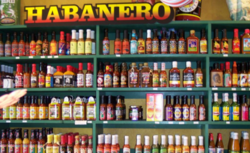Capsaicin Overload!
 Solve for
.
Solve for
.
As a true connoisseur of capsaicin, you can taste the presence of every single one your chili species distinctly in any chili sauce. So there are a LOT of chili sauces in your kitchen. In fact, your kitchen is basically filled with the tiny, semi-explosive chili sauce bottles you own. Why so many? -- because you have every kind of chili sauce that uses any combination of any number of your chilies (including one INSANE chili sauce that has all of the kinds of pepper you love in it!!!! -- whenever you use it, there's a 20% chance of spontaneous combustion of the food it's put on.) You also have exactly one chililess chili sauce among the , just to complete the set... but anyone who uses it is a dodo bird.
This section requires Javascript.
You are seeing this because something didn't load right. We suggest you, (a) try
refreshing the page, (b) enabling javascript if it is disabled on your browser and,
finally, (c)
loading the
non-javascript version of this page
. We're sorry about the hassle.
If we make chili sauces that use every possible combination of any number of the chili types we have, we are making X binary choices when we design a specific sauce. Say that there are X kinds of chili and order them 1 − X . Then, for each kind of chili, choose to either Include It = 1, or Do Not Include It = 0.
For example 10000...000 would represent the sauce that contains the first chili type and no others, and 11111...111 would be the sauce that contains every chili type.
The number of chili sauces will therefore be 2 X by the product rule. If 2 X = 8 1 9 2 , then X = 1 3 .